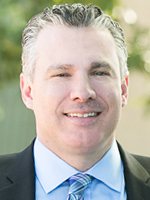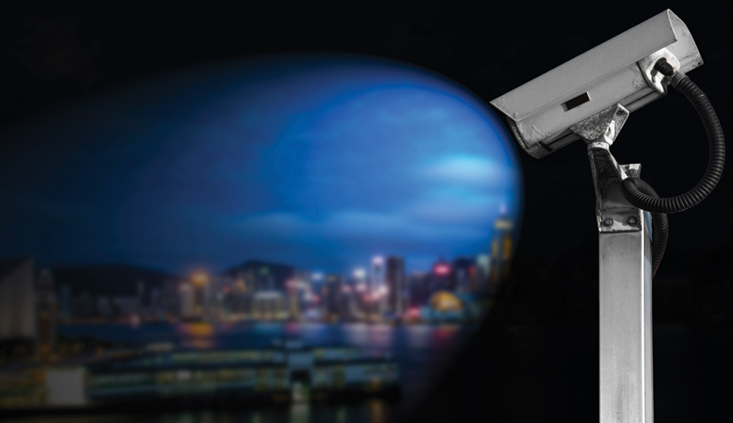Liability disputed
Critical steps to take when no one is taking responsibility for the auto accident
An automobile accident is the most common form of personal-injury case a new attorney will encounter. Although it may seem daunting at first, attorneys should not shy away from disputed-liability cases with big injuries because these cases can lead to significant recoveries for your clients. More often than not, attorneys will come across an automobile accident where both parties involved emphatically deny being at fault or where the most injured person has no recollection of the accident due to head trauma.
The situation is often further complicated by the fact that there are no independent witnesses to support any of the parties’ allegations and both parties claim they had a green light or the right of way. Although a traffic-collision report can shed some light on the party at fault, it is generally not the most reliable source of information. It is quite common to get a traffic collision report where parties’ names are confused or the details of the accident are inaccurate. Furthermore, the Investigating Officer does not always interview all witnesses to an accident. When confronted with this very common situation, there are a few simple yet critical steps an attorney can take that could potentially present the key to establishing liability.
Go to the scene of the accident
As soon as you recognize you have a potential disputed-liability case, you must go to the scene of the accident immediately with your camera. An attorney cannot properly litigate a case without personally going to the scene of the accident. Getting a firm grip on the layout of where your client’s accident occurred is essential to understanding what happened, why it happened, and how it happened. Try to go to the scene of the accident at approximately the same time as when the accident occurred. This will enable you to see the traffic flow during that particular time of day. Once you are at the scene of the accident, take your time to observe the traffic flow, speed limits, and signal patterns. Take photographs of the intersection and the traffic signals, as well as video footage. This can be extremely informative, as there are often certain intersections that are more prone to accidents than others. By spending some time observing the traffic patterns, you will be able see whether certain signals are short in duration, making it more likely for drivers to run red lights, or if there is a particularly dangerous blind spot or sharp turn that could also increase the risk of accidents. It is also important to approach the particular scene of the accident from the vantage points of not only your client, but the defendant. This will facilitate a comprehensive understanding of how an accident occurred.
Send preservation letters
To avoid issues with spoliation of evidence you should immediately send out preservation letters to the insurance companies and tow yards that are storing the vehicles involved in the accident. Although your client’s case may not necessarily be a products-liability claim, you want to be able to have the option of conducting a thorough inspection of both the vehicles involved. There may have been mechanical or maintenance issues that contributed to the accident. Therefore, make it a habit to send preservation letters out as soon as you get an automobile-accident case. Preserving the vehicle also gives your accident-reconstruction expert the opportunity to more accurately opine as to what happened. This will at least give you and your experts the option of conducting your own inspection of the vehicles involved.
Obtain traffic camera footage
Another reason why it is critical to go to the scene of the accident is to determine whether the particular intersection or street has traffic cameras. Many traffic signals that control major intersections are equipped with traffic cameras. The traffic camera footage can easily be subpoenaed from the city or the Department of Transportation, but you must act fast. As the traffic cameras are perpetually filming, the camera footage is only preserved for a certain period of time, and in many instances for only seven days. Therefore, the sooner you take action, the better. If you are pressed for time, send preservation letters to the correct governmental entity immediately and ask whether the footage can be requested without a subpoena. It is likely that a subpoena will be required, however, sending a preservation letter can at least place the appropriate entity on notice that you will be requesting such footage.
Obtain all video camera footage
If you are in a situation where there is no traffic camera at the scene of the accident or you are unable to obtain footage, do not be discouraged. The ubiquity of cameras these days may provide you with other avenues. Take the time to go to the nearby businesses to determine if they have their own security cameras they are willing to give you access to. Most businesses are equipped with cameras, particularly on the exterior of the buildings to increase security and deter crime. The footage of these cameras often includes a view of the street or intersection directly in front of the business. There may be footage on these cameras that could be helpful to you to establish liability or identify potential witnesses. Before you immediately resort to subpoenaing potential footage, try approaching the store owner or employee. Additionally, if your client was involved in an accident in a residential street or private neighborhood, go speak to some residents. Similar to businesses being equipped with cameras, many homes are now being equipped with security cameras. Knocking on a few doors and explaining your predicament in a polite and amicable manner could prove to be fruitful. Most people are willing to help.
Talk to surrounding businesses
Another extremely helpful and effective step you can take is to speak with the employees and patrons of the businesses surrounding the scene of the accident. Take a look around the intersection or street to see if there are gas stations, restaurants, or grocery stores. No matter what time of day the accident occurred, it is highly likely that somebody saw what happened or someone knows of a person who saw what happened
Gas stations can prove to be particularly helpful, as there is usually an attendant present at all hours of the day, as well as customers. Customers at gas stations tend to look out onto the street when they are pumping their gas. More likely than not, if an accident occurred right in front of a gas station, either a customer or an employee witnessed the accident.
You can obtain a list of customers by obtaining a list of whose credit cards were used during that particular time frame. Additionally, there may be 24-hour diners or fast food restaurants near the scene of the accident. Take a few minutes to speak to the employees and patrons. There may be regular patrons who saw or heard something on the day of the accident, and certainly the employees may have heard or seen something. Many witnesses are not eager to speak to police officers but are more likely to be willing to speak to an individual who is not a government employee. Approach potential witnesses with a friendly and casual demeanor and you may be surprised at how much you learn.
Obtain 911 records
Obtaining 911 records can be extremely helpful for determining how an accident occurred. Generally, witnesses to the accident place the call to 911.
Although these witnesses may not remain at the scene long enough for police officers to get their information, their contact information may be in the 911 audio recordings. Additionally, there may have been multiple calls placed to 911 with respect to the same accident. Having multiple accounts of how an accident occurred can help paint a clearer picture of who was responsible for the accident. Furthermore, this will give you the ability to cast a wider net for potential witnesses to the accident. By obtaining their contact information through the 911 audio recordings, you can reach out to potential witnesses to see if they are willing to have a more in-depth conversation with you.
Make sure you obtain 911 records from ALL possible agencies and don’t limit the records request to the agency that made the report.
Contact the Investigating Officer
While the Investigating Officer is required to write up a complete and full report, there can be facts or observations left out that may end up providing a clearer picture of the accident. The name of the Investigating Officer is included in every police report, along with their contact information. Having a five- to ten-minute conversation with the Investigating Officer as soon as possible can only help in your understanding of the case and may lead you to additional information. Again, the sooner you act, the better. It is important to keep in mind that one Investigating Officer may draft hundreds of reports for hundreds of different accidents within a short period of time. Unless your client’s accident is particularly memorable, the Investigating Officer will most likely be unable to recall the specifics about an accident the longer you wait to ask questions. If you are able to have a conversation with the Investigating Officer within the first few days of an accident, their recollection will be much sharper than during a later deposition.
Native photographs from the police department
Make sure to request the native files of the photographs taken by the investigating police department. Although police departments are required to preserve photographs taken at the scene of an accident, there are many situations where such photographs can be lost or deleted if they are not requested immediately after the accident. Do not wait until your case is further along in litigation to request photographs from the police department.
When requesting photographs taken by the police department, be sure to be specific about the format of the photographs you want. The best way to ensure that you will get high quality images is to specifically ask for the native files of the images taken at the scene of the accident and have the police department put those files on a CD. Taking a closer look at the photographs taken at the scene of an accident can assist you and your experts in understanding the location of the accident, the area of impact, where the vehicles came to rest, and even perhaps potential witnesses that may be in the images.
Cellphone records
It is highly unlikely that any driver is going to admit to the Investigating Officer that they were using their cellphones at the time of the accident. Although you will need to subpoena the defendant’s cellphone records, you do not need a subpoena to request your own client’s records. It is important to request your client’s cellphone records as soon as possible, as cellphone records are relevant and the defense will almost always get their hands on your client’s records eventually. Most individuals have access to their own cellphone records through their provider’s website and their online accounts. However, time is also of the essence when requesting cellphone records. Many providers will delete their customers’ text message records after 18 months. Therefore, it is imperative that you request your own client’s records as soon as you can.
ISO Report
Make sure to run an Insurance Services Office (ISO) Report on your client immediately. An ISO Report furnishes essential data for researching prior-loss histories, claim patterns, and detecting suspect claims. When liability is disputed, an ISO Report can also be helpful in determining who is at fault. If similar claims have been made by your client in the past, you can be sure that the defense will bring such information to light, thus, it is better to be prepared and educated about your client’s claim history.
Retain an expert
Retaining the right experts can make or break a huge case. In cases where liability is disputed and there is a lack of independent witnesses to testify to what happened, retaining the right experts will be critical in proving your case. An accident reconstructionist, a biomechanical engineer, or a human factors expert can put the story together and create a clearer understanding of what occurred. Such an expert will be able to analyze how an accident occurred, the area of impact, the speed, and the time it would take for a person to react in a similar situation.
Demonstratives and animations
Analyze the potential value of your case to determine whether a demonstrative or animation would be helpful in pushing for a large settlement. An animation of the accident can be extremely educational and persuasive to a mediator or, eventually, a jury. A jury may find it difficult to understand an expert’s opinion without any visuals. However, keep in mind that demonstratives can be quite costly. You will want to work with an accident reconstructionist or a biomechanical engineer when making the decision of the necessity of such evidence.
Philip Layfield

Philip Layfield is the Managing Partner of Layfield & Wallace, APC (L&W) with offices in Los Angeles, Orange County, Washington, DC and Park City, Utah. He is also the President-Elect of Los Angeles Trial Lawyers’ Charities. He specializes in taking disputed liability cases that other firms have turned away. L&W has 15 attorneys and 45 support staff.
Kimberly H. Whang

Kimberly H. Whang is an Associate in the Orange County office of Layfield & Wallace, APC. Ms. Whang graduated from the UC Irvine in 2009, earning a B.S. in Biological Sciences and then went on to pursue a career in law at Western State University College of Law, where she graduated magna cum laude in 2014.
Copyright ©
2026
by the author.
For reprint permission, contact the publisher: Advocate Magazine

